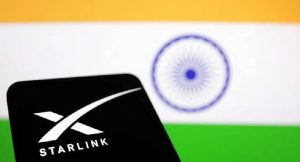A newly discovered coronavirus in China poses a significant threat and could spark the next pandemic.
American researchers say the new HKU5-CoV-2 virus is just one ‘small’ mutation away from being able to infect and cause outbreaks in humans.
The discovery is causing alarm because the pathogen is closely related to MERS, a highly lethal virus that kills up to a third of those it infects.
Adding to the controversy is the fact HKU5 was first documented in bats by researchers from the Chinese lab where Covid is feared to have leaked from.
For the latest study, a team from Washington State University studied how the new pathogen interacts with human cells in lab experiments.
Professor Michael Letko, a virologist at Washington State who co-led the study, said: ‘HKU5 viruses in particular really hadn’t been looked at much, but our study shows how these viruses infect cells.
‘What we also found is HKU5 viruses may be only a small step away from being able to spill over into humans.’
The findings reveal that a small change in the virus’s spike protein could enable it to bind to human ACE2 cells, which are found in people’s throats, mouths and noses.
Researchers collected the HKU5-CoV-2 strain from a small subset of hundreds of bats swabbed across southern and eastern regions of China.
It is currently only spreading in bats – but experts fear unregulated wildlife trade in China raises risk of spillover events.
In their experiments, the researchers used gene-editing tools to create ‘pseudoviruses’, lab-made virus particles that include the HKU5 spike protein but are harmless and don’t replicate.
These pseudoviruses were introduced to different types of cells, some carrying bat ACE2 and others carrying human ACE2.
The virus glowed green when it successfully entered and replicated inside a cell. Bat cells lit up brightly, showing HKU5 can easily infect them.
Human cells, however, showed little response unless the virus carried specific mutations that improved its ability to latch onto ACE2.
The results raise concern that if HKU5 jumps to an intermediate animal, such as mink or civets, it could acquire mutatations before reaching humans.
The FBI and CIA believe Covid-19 most likely originated from a lab leak at the Wuhan Institute of Virology, which was working with dangerous coronaviruses in the years leading up to the pandemic.
Another theory points to a wet market, where dozens of animals were kept in squalid conditions, possibly serving as an intermediate host before the virus jumped to humans.
The new study published in the Nature Communications, focused on a lesser-known group of coronaviruses known as merbecoviruses, which includes HKU5 and MERS-CoV, the virus responsible for Middle East Respiratory Syndrome first identified in Saudi Arabia in 2012.
MERS spreads from camels to humans and has a fatality rate of about 34 percent.
To visualize the virus’s structure, scientists used cryo-electron microscopy, a high-resolution imaging method that allowed them to examine the spike protein in detail.
They found that key parts of the spike remained in a ‘closed’ position, which makes infection more difficult, but not impossible.
‘These viruses are so closely related to MERS, so we have to be concerned if they ever infect humans,’ Letko said.
‘While there’s no evidence they’ve crossed into people yet, the potential is there and that makes them worth watching.’
Earlier this year, scientists in Wuhan reported that one strain of HKU5, Lineage 2, could already bind to human ACE2 receptors.
That means it might infect human cells without needing to evolve further.
Now, US researchers have broadened the investigation, studying the entire merbecovirus family, not just one strain, but dozens, including MERS-CoV and multiple HKU5 variants, to better understand their potential to infect human cells.
Lineage 2 appears more immediately dangerous, already equipped to enter human cells.
But this new study reveals that several other type of HKU5 viruses may only be a few mutations away from doing the same. Daily Mail









